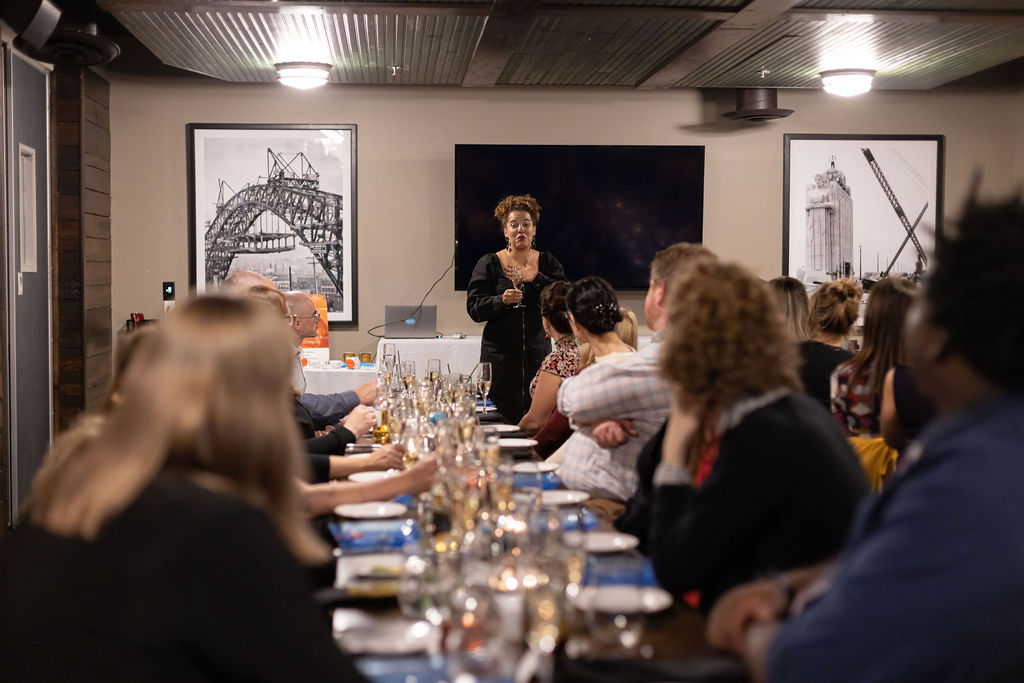This article first appeared in the Giving USA blog.
As the nonprofit sector reels from new data showing that giving from individuals is in decline, the bright side is that giving from foundations continues to rise.
Consider:
- According to Giving USA Foundation, foundation giving has steadily grown over the last dozen years.
- According to GrantStation.com‘s 2023 State of Grantseeking Report, submitting more grant proposals leads to more grant awards.
- According to research by FoundationMark published earlier this year, U.S. foundations have reached an historic level of $1.5 trillion in combined assets.

This is good news for nonprofits—and good reason to focus more fundraising time and resources on grants. And yet while grant funding may be abundant, the competition for grants is fiercer than ever. This is especially true now as pandemic-era relief dollars expire and donations from individual donors dwindle, and more nonprofits than ever turn to foundations to help bridge the remaining budget gap.
In this robust but competitive grant seeking market, what will set some organizations apart? The answer lies not in the proposals themselves but in what precedes them: a thorough and thoughtful strategic plan. Starting your pursuit for grant funding with a well-crafted plan positions your organization to navigate the complexities of fundraising with focus and foresight, increasing your chances of securing the support you need to advance your mission.
The Foundation of Funding Success
A strategic plan serves as a compass for an organization generally and for the grants program specifically, enabling leaders to focus on approaching the right grant makers and make a compelling case that results in more (and larger) grants.
A nonprofit organization’s best funding prospects are the grant makers whose mission and funding priorities align most closely to the organization’s mission and strategic priorities. These are the foundations most likely to say “Yes!” to a grant proposal. If an organization’s objectives are scattered, its grant seeking efforts are also bound to be scattered and ineffective, resulting in lost revenues and wasted effort.
When my team at Grants Plus sets out to help a nonprofit organization increase grant revenues, we start by building a tiered and targeted prospect pipeline of all the grant opportunities they will be competitive to pursue. But to identify the best prospects, we must rely on our client to articulate their grant fundable priorities. These aren’t “ideas” that our client thinks will impress a funder, but rather the committed programs and key initiatives they are ready to put resources behind and for which they can demonstrate the measurable outcomes and impact required to secure buy-in and investment from funders.
The nonprofit leaders we see struggle to raise grant funding are those who have skipped the step of strategic planning, and who instead have gone straight to chasing dollars. But without a clear strategic plan, pursuing grants can be like constructing a building without a blueprint. Nonprofit leaders who bypass this crucial planning phase are often attempting to build from the top down, drawn by the allure of the skyline. However, without a clear structure and a grounded strategy, their efforts may result in instability, misallocated resources, lost revenues, and unnecessary risks.
Meanwhile, the leaders most successful at winning grants are those who have taken the steps to put a strategic plan in place. Having a strategic plan creates stability and vision for an organization overall, but also serves to streamline the grant seeking effort and ultimately increase grant win rates and revenues.
“Leverage the strategic plan to engage with prospective funders. Completing a strategic plan is a great reason to reach out to funders and ask for a meeting to share the plan, answer questions, and spark their interest.”
Kate Roosevelt, Co-President of Campbell & Company
The Core
Despite the clear payoff of a strategic plan, too many nonprofit organizations go without one. I spoke to two of the most experienced strategic planning experts in the industry about what nonprofit leaders should know to move a strategic planning process forward.
First, what’s at the core of an effective strategic plan? I asked Kate Roosevelt, Co-President of Campbell & Company, an employee-owned national consulting firm that has served thousands of nonprofit clients since its founding in 1976. Kate explains: “In its purest form, a strategic plan is an organization’s north star. It describes the organization’s vision for change, its purpose, and the values that inform its work. Even more specifically, it defines the organization’s strategic priorities for a set period of time, often over one to three years.”
Kate explains that a strategic plan can take a variety of forms. “It may be a one-page summary, or a detailed roadmap, or even a fully-fledged operating plan. At a minimum, a strategic plan is a summary document that can be easily referenced and shared by staff leaders and board members alike.”
The Signals
I also talked with Lee Ernst, Chief Operating Officer and Senior Consultant at Johnson, Grossnickle and Associates, a philanthropic and strategic consulting firm that has supported nonprofit organizations across the country for more than 30 years.
I asked Lee when nonprofit leaders should initiate a strategic planning process. “The good news,” Lee explained, “is that there are common signals, I call them ‘blinking lights,’ that tell an organization it’s time.” Lee encourages nonprofits to consider these markers:
- The last strategic plan is nearing its expiration date—or has already expired. “The most effective organizations are always operating on a refreshed and current strategic plan,” says Lee.
- The organization must address real-time challenges. “The organization may need to create new revenue streams to build greater financial stability,” Lee explains, “or the staff and board is undergoing a leadership shift or solving issues in operations, technology, or infrastructure.”
- Leaders recognize they are on the brink of change. “The world is evolving at a pace that is sometimes overwhelming. Organizations should engage in strategic planning to help them think boldly about the future,” Lee says. “This can look like innovating new programs to meet emerging needs in the marketplace or even modifying the organization’s mission to remain relevant and ready for what comes next.”
Lee emphasizes the importance of being ready—with committed resources of time, people, and funds—to engage fully in the strategic planning process. “Without the appropriate input and preparation,” Lee warns, “you risk ending up with just another file full of ideas gathering dust.”
The Preparation
Kate agrees that being prepared is key to making the most of the strategic planning process. She and her colleagues at Campbell & Company recommend that staff and board leaders engage in asking themselves these questions:






- What are the goals and desired outcomes of this process? What will the organization be able to do as a result?
- Who needs to benefit from this process and how? What does the board need out of this process? What does executive leadership need? What does the staff need?
- What do we need to learn or assess about the broader landscape in which we work? Who do we need to hear from and why? How will we listen and collect their input?
- Who will be at the table to digest the input we gather and shape our next strategic priorities? What is the role of the board and staff?
- What is the timeline for this work? How does this process align with other major organizational initiatives?
- Do we need a consultant to design or facilitate all or part of the planning process?
If done well, with committed buy-in and sufficient resources and expertise, the strategic planning process can yield synergy around shared vision and goals, not only amongst staff and board, but also with stakeholders, donors, and grant makers. Upon the completion of a thorough strategic planning process, your organization stands on the brink of transformation. This pivotal moment calls for action that matches the ambition of your newly outlined strategic goals. Investing in a more robust grant seeking strategy is not merely a step forward; it’s a leap towards realizing the potential your strategic plan envisions. Aiming higher in your grant pursuits affords an opportunity to breathe life into your goals, turning the blueprint into tangible funding while signaling to funders and to your community a commitment to substantial growth and meaningful impact.




